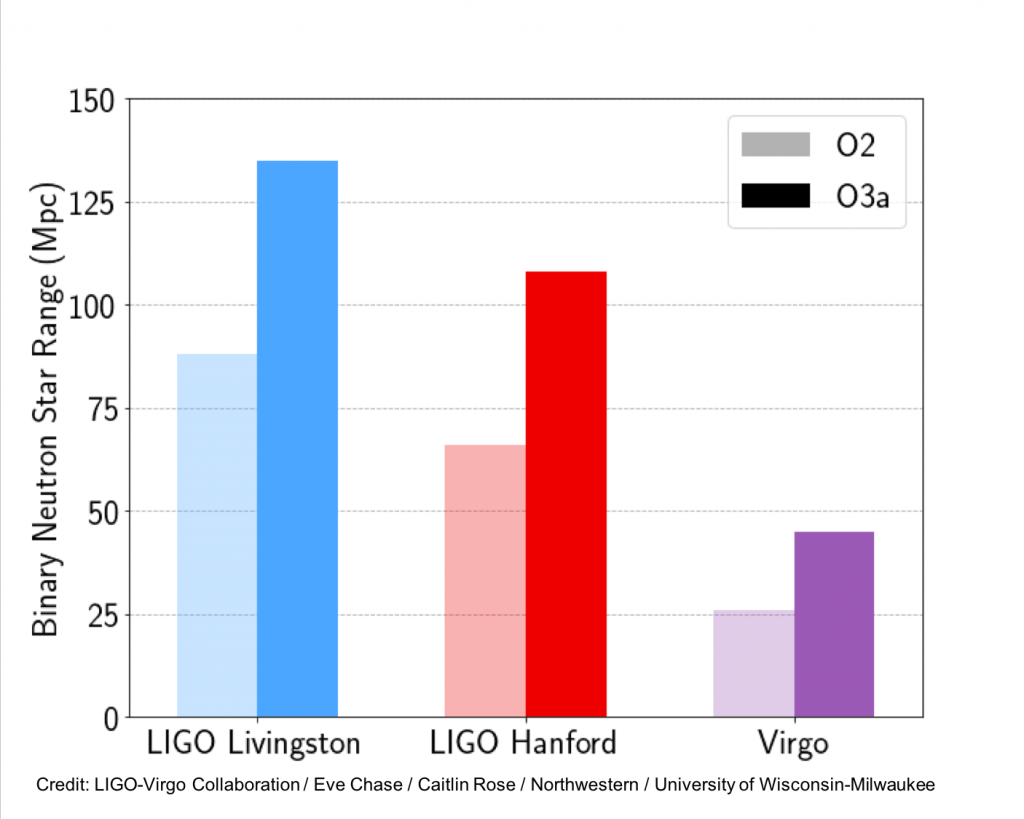Few events in the astronomy community were received with more fanfare than the first detection of gravitational waves, which took place on September 14th, 2015. Since then, different events have been recorded using the same techniques. Many include data from other observational platforms, as the events that normally create gravitational waves are of interest to almost everyone in the astronomical community. Black hole and neutron star mergers and the like provide a plethora of data to understand the physics that happen under such extreme conditions.
To distribute that data equitably, researchers at LIGO, one of the main observatories for gravitational waves, have released a data set that contains information about all 50 confirmed gravitational wave events that have taken place since observations began. What’s more, a team from the Cardiff University made a tool that makes it much easier to navigate the data.

Credit: LIGO-Virgo Collaboration / Eve Chase / Caitlin Rose / Northwestern / University of Wisconsin-Milwaukee.
That data was primarily collected by three different gravitational wave observatories – two different sites for LIGO (LIGO Livingston in Louisiana and LIGO Hanford in Washington State) as well as the Virgo interferometer, located in Italy. The events that were captured included the most observed astronomical event ever recorded – the merging of two neutron stars that took place on August 17th 2017.
Unfortunately, LIGO’s most recent observational session was cut slightly short by COVID. The observatory is currently undergoing upgrades to increase its sensitivity, and is expected to be back online in around June 2022. In the meantime, amateur and professional astronomers alike will have plenty to pour over in this new catalog before any new gravitational waves are detected.
Learn More:
Armagh Observatory: The largest-ever catalog of gravitational waves released
LIGO: GWTC-2: An Expanded Catalog of Gravitational-Wave Detections
University of Cardiff: LIGO-Virgo Compact Binary Catalogue
Lead Image: Data from the set of gravitational waves.
Credit: Cardiff University Gravitational Exploration Institute Data

